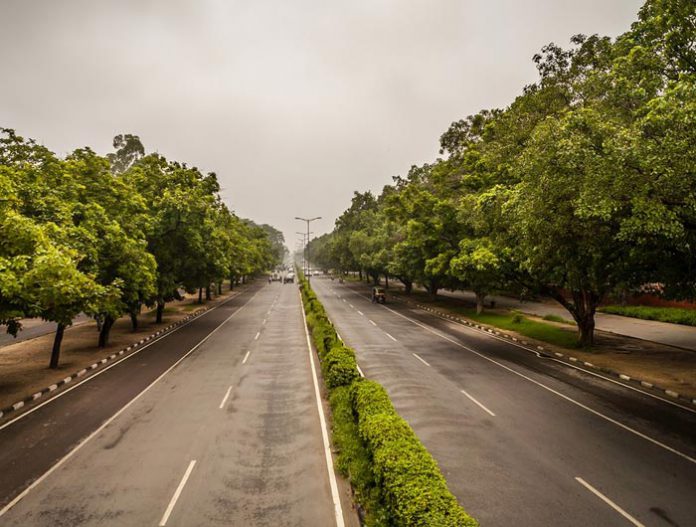Chandigarhians love to boast their Chandigarh as City beautiful, for its beautiful architecture and astute urban planning and the breathtaking backdrop of gorgeous himalayas and greenery around. And there has been phenomenal increase in the green cover in the city as per the latest state of forest report of Forest Survey of India (FSI). Chandigarh now stands second amongst all the union territories (UT), first being Daman and Diu.
Tree Cover sprawls around Chandigarh
Tree cover is defined as patches of trees on area which is exclusive of one hectare of the forest area. It includes all plantations in residential areas, roadsides, parks and gardens.
Spread over 10 square kilometers in Chandigarh, tree cover percentage has gone up from 7.80% in last report (in 2015) to 8.77% of total geographical area now.
How Tree cover increased:
The credit to increased tree cover largely goes to sustained plantation drive carried by the Chandigarh administration in last few years. According to reports, around 2.5 lakh trees have been planted in different parts of the city in the last one year itself.
The UT administration plans to plant around 3 lakh saplings for the next financial year as per the Greening Chandigarh Task Group.
The term forest cover refers to an area which sprawls over one hectare having dense plantation.
According to FSI report, the forest cover has seen slight fall from 21.66 square kilometer (in 2015) to 21.56 square kilometer this year.
Reasons for this fall
Development activities are pointed as the cause for the menial negative graph of 0.10 square kilometer in the forest cover. Out of three categories of forest area defined (very dense forest, moderately dense forest and open forest cover), only moderately dense forest has come down from from 13.92 square kilometer recorded in 2015 to 13.82 square kilometer in 2017. Other two have remained constant.
Forest areas in Chandigarh:
The forest area in Chandigarh includes areas like:
- Sukhna Wildlife Sanctuar
- City Bird Sanctuary, Sector 21,
- lake reserved forest,
- Sukhna choe reserved forest
- Patiala-ki-Rao forest.
- Also included is the compensatory afforestation sites of Maloya and Sarangpur.
Water bodies have also recorded an increase
There is an increase in water bodies within the forested areas in Chandigarh. From 1.45 square kilometer, the water bodies have gone up to 1.49 square kilometer.





















